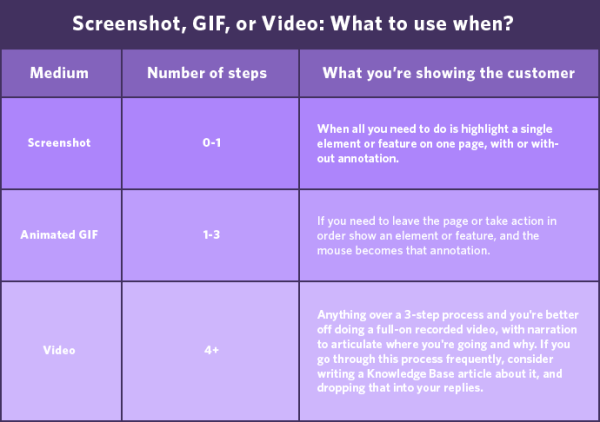You’ve finished writing an epic blog post. You’ve edited it, double-checked the quotes and sources, scheduled the publish date and even added it to your upcoming MailPoet newsletter. There’s only one problem: it’s a giant wall of text!
It’s no secret that people are visual creatures. We like images, videos, and other attention-grabbing visual objects. While the written word is no doubt important for conveying complex ideas, it is best balanced with a variety of images. In this post, we’ll talk about why images matter and where you can easily find new ones for your blog posts and email newsletters.
Why images matter
Now, you may think that making your newsletter as text-heavy as possible is a good thing. After all, attention spans are short. However, the oft-repeated cliché is true – a picture is worth a thousand words. This is especially true in the fast-paced world of social media.
One alarming study found that the attention span of a human is now only eight seconds–which is said to be one second shorter than that of a goldfish. How can organizations hope to engage individuals with these challenges? The answer is through visuals. The overall trend in social media today is to be as visual as possible. In fact, almost 66 percent of social media posts are visual.
Inc. Magazine
Even if your newsletter is primarily focused on writing, it’s still super useful to include an image or two. This is especially true if you want your readers to remember something: people consistently remember images much longer than they remember words.
People can remember more than 2000 pictures with at least 90 % accuracy in recognition tests over a period of several days, even with short presentation times during learning. This excellent memory for pictures consistently exceeds our ability to remember words.
Seyens.com
In short: images matter.
Where to find images
Alright, so now you know that images are important. But where can you find free or low-cost photographs and illustrations to use? Unless you’re a professional photographer, you’ll most likely need to use someone else’s images.
Thankfully, there are hundreds of websites with free-to-use (or low-cost) images. Let’s go through some of the better ones.
Unsplash
Unsplash is one of my personal favorite image sites. Every week, they release hundreds of completely free-to-use images. Their full collection contains over 300,000 images.
Wikimedia Commons
The Wikimedia Foundation runs its own library of free-to-use media files. With over 42 million files, you’ll be sure to find something you like.
New Old Stock
New Old Stock is a unique site. Rather than feature modern or contemporary photos, the site is full of archival photos.
Dreamstime
Dreamstime is a huge stock photo site, with over 68 million photos and 19 million users. Most photos aren’t free, however, they are usually quite inexpensive.
Shutterstock
While not free, Shutterstock definitely deserves a mention. With over 171 million (!) images, the site will most certainly have what you’re looking for. If you can’t find a free image, try browsing Shutterstock.
Odds and ends
Still can’t find a good image? Try one of these more niche websites: Libreshot, Stocksnap.io, Pixabay, The Public Domain Archive, StockVault, or the ominously-named Morguefile.

Animated GIFs
If a picture is worth a thousand words, is an animated GIF worth a million? Probably not, but they’re still super useful. Some great sites to find animated GIFs are What Should We Call Me, Animal GIFs, PandaGIF, Reaction GIFs, and of course, Giphy. You can also make an animated GIF from scratch. Check out our guide to creating your own.
HelpScout has a great guide to making GIFs and a table (shown below) on deciding when to use an image, when to use a GIF, and when to use a video. Although it is aimed at providing support, the same logic applies to virtually any educational topic.
A word of warning: don’t over-do it! GIFs can be awesome, but only if used sparingly. Try to avoid using more than one or two GIFs per newsletter/blog post.
For more information, take a look at our best practice guide to using animated GIFs in emails.
Optimize, optimize, optimize!
As a final note: we always recommend optimizing your images before uploading them to your blog or newsletter. While you may have lightning-fast internet, your readers may not. This is especially important when it comes to mobile devices – large images can drain even the biggest data plan.
The simplest and easiest way to minimize the size of your images is to use TinyPNG. This free service will dramatically reduce the size of your images with little-or-no effect on the image quality. There is also a TinyPNG WordPress plugin, but it only allows for ±100 images per month.
Where do you find images for your own blog posts and newsletters? Have a lesser-known recommendation? Share it in the comments!










Very helpful post. Thanks
Glad you found it helpful, Andrew!
Images are one of the most important part of any blog post. Unsplash is an excellent source of images for blogs.
Thanks
Indeed, Unsplash is definitely my favorite!
thanks
great post check also https://photostockeditor.com for
more free photos, high res
Unplash is Great!!!!